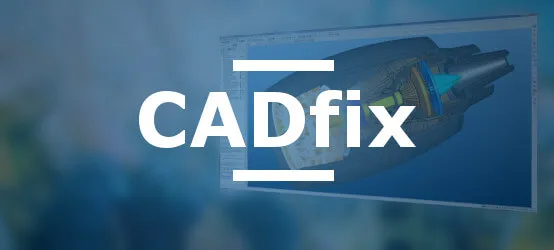As the world of 3D printing and fabrication additive continues to evolve, so does the need for high-quality CAD models. Enter CADfix. In the bustling realm of CAD, ensuring that models are optimized for 3D printing has become a paramount concern. The stakes are high, and the tools available play a vital role. With solutions like CADfix, the challenges faced during the CAD model preparation for 3D printing processes are addressed effectively. But what exactly is involved in this intricate process?
The Art of Reverse Engineering in CAD
Reverse engineering, especially within the CAD context, is more than just duplication. It's about capturing the very essence of an existing object, understanding its dimensions, properties, and design intricacies, and then digitally reproducing it using CAD tools. Let's dive deeper.
Data Acquisition: The first step is to obtain data from the physical object. This can be done in several ways:
- 3D Scanning: High-resolution scanners can create a point cloud representation of the object. These scanners use lasers, structured light, or other means to capture the geometry of the object.
- Photogrammetry: This involves taking multiple photographs from different angles and using software to reconstruct a 3D model from the images.
- Manual Measurement: Traditional tools like calipers and micrometers can be used to measure and then manually input the measurements into CAD software.
Point Cloud Processing: If 3D scanning is used, the raw data will typically be in the form of a point cloud. This data needs to be cleaned, filtered, and sometimes resampled to make it usable. There are specialized software tools available for this purpose.
Surface Reconstruction: Once the point cloud data is processed, the next step is to convert it into a surface or solid model. This involves creating smooth, continuous surfaces from the discrete points in the cloud.
CAD Model Creation: Now that a basic surface or solid model has been generated, it's imported into a CAD software. Here, the model might be refined, features (like holes, bosses, or fillets) can be added or edited, and the model can be prepared for downstream applications like simulation, analysis, or manufacturing.
Validation: This step involves comparing the CAD model to the actual physical object to ensure accuracy. Adjustments might be made based on any discrepancies.
Challenges with Faceted Models
But what about faceted models like STL? They bring a unique set of challenges to the table.
- Lack of Design Intent: Faceted models only represent the surface geometry of an object without any underlying design intent, parameters, or feature history. As such, understanding why certain design decisions were made or trying to modify the design becomes more challenging.
- Quality of the Facets: Facets that are poorly defined, have gaps, or are overlapping can pose problems during the reverse engineering process. Such issues might arise from a low-quality scan or from errors during the meshing process.
- Converting Mesh to Solid: Transforming a faceted model into a solid CAD model can be challenging. While some software tools are available for this purpose, the results may not always be perfect, and manual intervention is often required.
- Complex Geometries: Faceted models can sometimes represent very complex geometries. Simplifying or smoothing these complex shapes while retaining the essence of the design can be difficult.
- Data Size: High-resolution scans produce a large number of facets, leading to large file sizes. This can slow down processing and manipulation, especially on less powerful computers.
- Feature Recognition: While there are software tools that attempt to automatically recognize features (like holes, bosses, or fillets) from a faceted model, they are not always accurate, particularly if the original mesh quality is poor. Manual recognition and modeling of such features can be time-consuming.
- Accuracy and Tolerance: Ensuring that the reverse-engineered model is accurate and within desired tolerances is critical, especially if the model is intended for manufacturing or engineering analyses.
- Software Limitations: Not all CAD software handles faceted models with the same proficiency. Some might be better suited for mesh manipulation, while others might excel at converting meshes to solid models. Finding the right tool for the job can be a challenge.
- Loss of Surface Smoothness: Faceted models represent surfaces as a series of small, flat triangles (or other polygonal shapes). When reverse engineering, it's a challenge to ensure that the resultant CAD model's surfaces are smooth and continuous, particularly if the original object had smoothly varying curves.
- Material Properties and Internal Structures: A faceted model generally doesn't provide information about the material properties or internal structures of the object, making it challenging if these aspects are crucial for the reverse engineering purpose.
- Legal and Ethical Concerns: Using faceted models (like STL files) from sources without proper authorization can lead to intellectual property infringements. It's essential to ensure that reverse engineering activities from such models are compliant with relevant laws and ethical standards.
In essence, reverse engineering from faceted models demands precision, a keen eye for detail, and the right software tools. A solution like CADfix can be pivotal in navigating these challenges.
Coming full circle, it's evident that tools like CADfix are not just nice-to-haves. They are integral to the CAD ecosystem, especially when preparing models for 3D printing and other fabrication processes. In a domain where precision and efficiency are paramount, CADfix promises to deliver, ensuring your CAD models are optimized and ready for the future.


